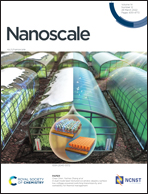Sponge-like loose and porous SnO2 microspheres with rich oxygen vacancies and their enhanced room-temperature gas-sensing performance†
Abstract
Structure and surface modification of semiconductor materials are of great importance in gas sensors. In this study, a facile citric acid-assisted solvothermal method via a precise calcination process was leveraged to synthesize sponge-like loose and porous SnO2 microspheres with rich oxygen vacancies (denoted as LP-SnO2-Ov). When this material was used in a gas sensor, it exhibited an extremely high response to 10 ppm hydrogen sulfide gas at room temperature (Ra/Rg = 9688), which was 54 times higher than that of commercial SnO2. Furthermore, the response time of LP-SnO2-Ov was 5 s, while the recovery time was 177 s. Moreover, it displayed such high selectivity and stability for hydrogen sulfide gas that its properties remained almost unchanged after 1 month. This method paves a new way to fabricate materials possessing a sponge-like loose and porous structure with oxygen vacancies, which is promising for many other scientific fields such as lithium-ion batteries and photocatalysis.



 Please wait while we load your content...
Please wait while we load your content...